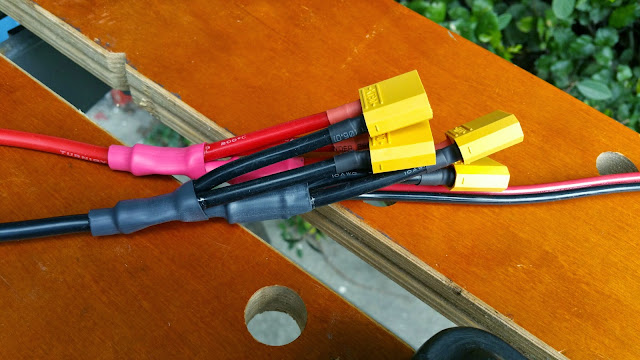docnjoj
1 GW
Thanks Chris. Connectors arrive today and I will put them on immediately and start cycling the batts.
otherDoc
Yeah I never go over 2C for these cells.
otherDoc
Yeah I never go over 2C for these cells.
I just got done reading this hole thread and when I got to this point I was like "WOOHOO!"I have tested the 16Ah cells and I approve for 3C or 48A use. I just did discharge tests and they hold above 3.5v for 15.8AH and deliver 16.7AH down to 3.0v. Im going to do 1 more test to 4C or 64A. This will let me me know if I can run 1P on a 65A Lyen Controller with acceptable sag. the 3C test surprised me.
striker54 said:Vector frame
I have to start a build thread :wink:
Offroader said:Does anyone know if you can get build a pack with a safer chemistry than the multistars and still be as lightweight?
Offroader said:striker, when you assembled your huge pack what gauge wiring did you use for your harness? I assume you used two sizes. One size to connect to the individual packs to put them in parallel, with xt90 connectors. And another main battery wire to connect the packs that are in parallel to the controller.
Maybe you even have a picture of the completed wire harness you made? I'm curious to see how you did if that is available.
Do both the 4s and 6s multistars have xt90 connectors?
Thanks again!
+1striker54 said:I used 10AWG (same size of the packs) to connect the individual packs in parallel with the XT90 and then 8AWG with XT150 connectors to put them in series.
This sounds like a good solution. Also if the smaller wires are just big enough for the need they could double as fuses incase something nasty happened. I'm currently using Anderson 75 with 8 gauge for the long series link and the main controller leads. So these would work good for this. I like the Idea of paralleling 6 this way to match the 6 parallel balance tap harnesses.A connector that will take 7 each wires on one side, and an 8 gauge on the other is one way to do the parallel transition, or a crimp ring with a good crimper.
That's one advantage of a T-connection. It keeps everything short and localized.Making the runs short is also a bonus, both from bulk and voltage drop.

Offroader said:striker54 said:Offroader said:striker could you measure the thickness of two of those 16,000MAH packs. I am wondering if I could squeeze them in a raptor 140, which may be only 136mm internal frame width.
Thanks!
You need 4mm more. They measure 140mm.
I tried to compress them with my hands and the best i acheved was 139.5mm
Thanks, that's perfect.
I'm going to have to find out the exact internal width of the raptor 140 frame.
based on Qulbix demension chart it looks to be exactly 140mm, kind of cutting it close.
http://www.qulbix.com/images/documents/Qulbix_Raptor140_BatteryBoxOpenning.pdf
Normally I would consider building a 18650 pack if it is the same weight but the above two posts make me not want to consider it if I can use the multistars. I also like to pop out my packs and individually test them and repair cells when needed.
KINNINVIEKID said:Wrap them with filament tape to prevent any swelling.
I also use vinyl floor tile for puncture protection and finally a covering of Duct tape to hold it all together.
